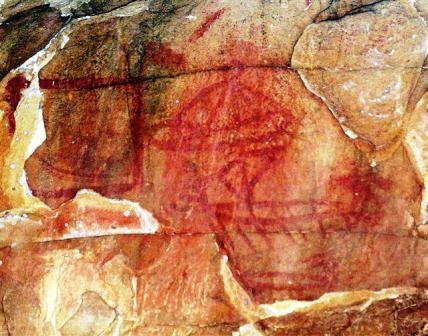Today’s municipality of Jimena originates in the depths of history. Prehistoric settlements have been found in the area, their principal evidence being the cave paintings at Laja Alta (photo), with others probably yet to be discovered.
Many peoples have chosen to settle here. Iberians, Phoenicians, Greeks, Carthaginians, Romans, Visigoths and Muslims, have all settled for longer or shorter periods. Oba (or Obba), as Roman Jimena was called, was so important that it issued its own coinage. The Islamic town of Xemina became increasingly significant from the III Century, reaching its apogee in the XV Century, when it was a vitally strategic piece of the frontier line between Christians and Nazaríes, as latter-day Moors are called in Spanish.
The castle-fort is a faithful witness of this fact, although its final construction dates from the VIII Century. Recent digs under the Tower of Homage, however, point clearly to its being built on Roman (photo), possibly even Phoenician, foundations. Towards the end of the XV Century, Jimena was taken conclusively by King Enrique IV. Felipe V gave Jimena its title of Loyal for her role in the War of Spanish Succession, while Alfonso XII proclaimed it a City in 1879. The rural colonies of Buceite and San Martín were established between 1875 and 1879, later to become San Pablo de Buceite and San Martín del Tesorillo respectively and incorporated into the municipality of Jimena de la Frontera. Other villages included are Estación de Jimena, Marchenilla and Montenegral. (There is more about Jimena in Out & About.)


No comments:
Post a Comment